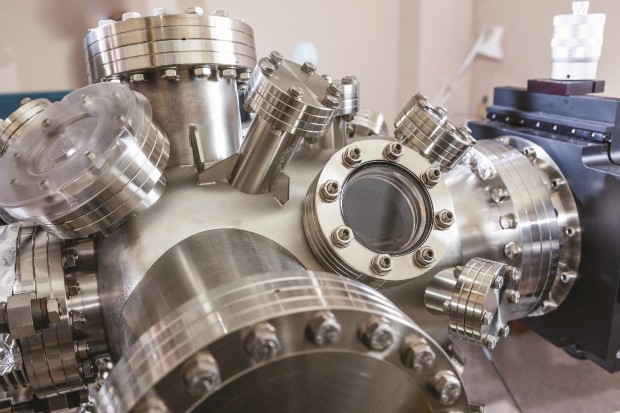What to Consider When Buying a Vacuum Pump?

Vacuum Pump System by Agilent.com
Anyone with little to no understanding or in-depth knowledge of pumps might think that creating a vacuum is simply 'plugging in the pump', starting it, and waiting for the vacuum to drop to the required level. But the reality is that there is a lot more to it than meets the eye.
Vacuum pumps are used to remove air or gas molecules from a closed chamber, thereby creating a vacuum. For example, the vacuum level can be controlled using vacuum pumps calibrated at a specific pressure. Finding the right one requires not only a thorough understanding of the vacuum system and application required, but also an understanding of process conditions, operating ranges, and advantages and limitations as well as specifications of each type of vacuum pump.
In this article, we will briefly describe four things to consider when choosing between different types of vacuum pumps.
We also remind you that if you want to find out what are the professional products on the vacuum technology market, you can visit the website of the American company Agilent Technologies. In the Agilent Vacuum Pumps section you will find a large variety of products for any need
1. VACUUM Pressure
Pump selection is highly dependent on the degree of vacuum to be obtained. Generally, the different pressure ranges in vacuum technology are defined as follows:
Raw vacuum (from 10 3 mbar to 1 mbar)
Medium vacuum (1 mbar to 10 3 mbar)
Vacuum high (10 3 mbar to 10 7 mbar)
Ultra-high vacuum (10 7 mbar to 10 12 mbar)
Extremely high vacuum (less than 10 12 mbar)
In a coarse and medium vacuum, most gas molecules are in a chamber volume vacuum, while in ultra-high vacuum (UHV) and extreme vacuum (XHV) most of the remaining molecules will be on or in the walls of the chamber, respectively. Therefore, different pumping technologies will be required for different vacuum pressure ranges.
Depending on the target vacuum level, a mixture of different vacuum pumping technologies may be required. Primary vacuum pumps, i.e., those operating in the coarse and medium vacuum range, release into the atmosphere and can operate in isolation. High and extreme vacuum pumps, such as turbofan and diffusion pumps, must vent or operate with the main pump to create a vacuum from which they can operate.
2. Mechanics of the Pump:
Depending on the area of application and the materials to be pumped, the selection of the pump(s) may vary. For example, rotary vane (RV) pumps are suitable for a wide range of low and medium vacuum applications including research and development, analytical instruments, industrial operations and coatings, lyophilization, process engineering, and many other applications. Compared to RV pumps, the applications of scroll pumps are mainly limited to processes, free of dust and dirt that can damage the nozzle seal in a short period of time.
3. Impact of the Pump on the Area:
It is equally important to evaluate the impact of a vacuum pump on an application or process. There are a number of variables that can influence the choice between different types of vacuum pumps, including - but not limited to:
● Oil or hydrocarbon emissions
● Vibration generated by the pump
● Sounding noise
● EMC emission
● The magnetic field generated by a pump
● Particle emissions
● Heat emission
● Power consumption
Returning to the product examples above, RV pumps are at a disadvantage because they cannot create a vacuum without hydrocarbons due to the amount of oil discharged. Scroll technology, on the other hand, although capable of creating a hydrocarbon-free vacuum, carries the risk of particulate emissions due to head seal wear.
4. Investment and Maintenance
In addition to looking at what needs to be achieved, initial investment costs, operating costs, and maintenance needs should be assessed.
As an example of two high vacuum pumping technologies, Turbo Molecular Pump (TMP) and Oil Diffusion Pump, it is fair to say that the initial cost of TMP will generally be significantly higher than that of TMP. However, considering the cost of ownership over a 5-year period, oil diffuser pumps can be more expensive due to higher energy and maintenance costs. For some products, economic advantages may apply from a certain type of pump size/performance.

Turbo Pump Internal Section by Agilent.com
There are two classifications for vacuum pumps. Primary pumps deliver directly at atmospheric pressure (such as rotary, scroll, diaphragm, screw, and multistage pumps) and secondary pumps require the use of a primary pump for continuous support (molecular turbine pumps and diffusion pumps) or to discharge to a pressure they can begin to operate such as ion collector, titanium sublimation, non-volatile receiver, and cryogenic pump.
Creating an effective vacuum requires an understanding of the needs and types of vacuum pumps available. Choosing the wrong pump can be a costly mistake and potentially harm your operation otherwise.
See Now: NASA's Juno Spacecraft's Rendezvous With Jupiter's Mammoth Cyclone
* This is a contributed article and this content does not necessarily represent the views of scienceworldreport.com




Join the Conversation